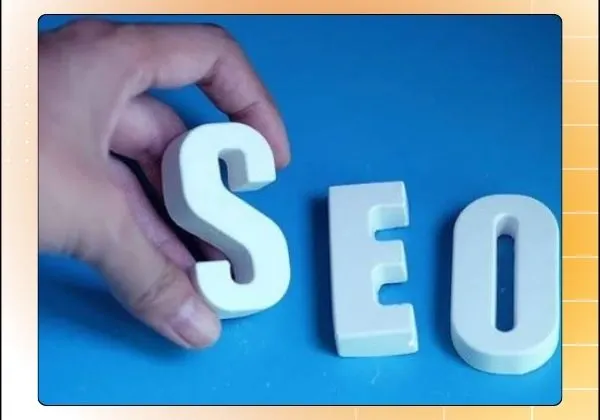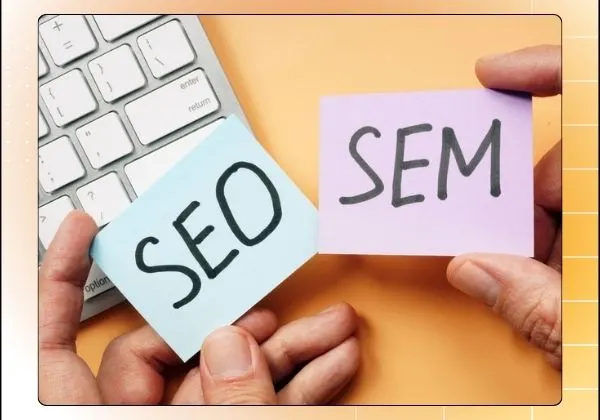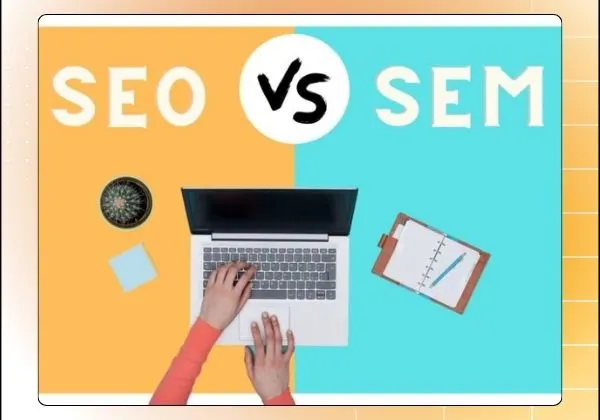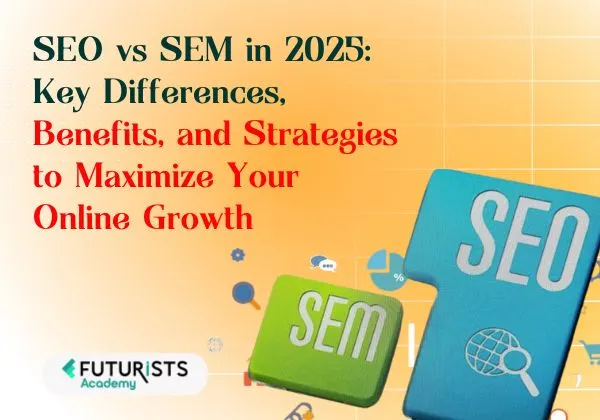Learn the core differences between SEO vs SEM in 2025, along with proven strategies to improve search visibility, boost traffic, and grow your brand using both organic and paid methods.
Choosing between SEO vs SEM in 2025 is now a strategic necessity for businesses focused on long-term digital growth. As search engines evolve with AI, voice search, and algorithm updates, relying solely on traditional methods is no longer effective. SEO offers sustainable organic visibility, while SEM delivers immediate results through targeted paid campaigns.
Understanding the specific role of each is crucial for maximizing reach and ROI. Businesses must evaluate their goals, budget, and timeline to create the right balance. This blog explores the key differences, benefits, and latest trends in SEO and SEM in 2025, along with practical integration strategies that help brands stay competitive and visible in an increasingly dynamic digital marketing environment.
Understanding SEO in 2025
Search Engine Optimization (SEO) refers to improving your website’s visibility in unpaid search engine results. In 2025, SEO is more strategic, technical, and user-centered than ever before.
It is not only about ranking for keywords but also about delivering relevant, authoritative, and helpful content that satisfies user intent.
Key features of SEO in 2025 include:
- Semantic Search Optimization: Google’s algorithms now interpret meaning and context, requiring high-quality, intent-focused content.
- Voice and Visual Search: SEO strategies now account for how users search through voice commands and image queries.
- AI-Optimized Content: Search engines prioritize content that is personalized and context-aware.
- Core Web Vitals and UX: Page speed, mobile usability, and overall user experience directly impact search rankings.
- Content Authority: E-E-A-T (Experience, Expertise, Authoritativeness, and Trustworthiness) remains a decisive factor in organic visibility.
Businesses that invest in SEO build long-term trust, gain organic traffic, and strengthen their brand reputation over time.

What SEM Looks Like in 2025
Search Engine Marketing (SEM) involves promoting your website through paid advertisements that appear on search engine results pages. In 2025, SEM is more powerful due to advancements in AI and automation that enhance targeting, bidding, and ad performance.
Major elements of SEM in 2025 include:
- Smart Bidding and Predictive Analytics: Algorithms automatically optimize ad placements and budgets based on user behavior and intent.
- Performance Max Campaigns: Unified ad campaigns across multiple Google platforms enhance reach and conversion.
- Hyper-Personalized Targeting: Ads are now tailored using real-time audience data, location, demographics, and search patterns.
- Visual and Video Ads Integration: SEM now incorporates rich media ads to attract and engage users across devices.
With SEM, brands can immediately reach targeted audiences, launch time-sensitive offers, and test marketing messages with measurable results.
SEO vs SEM in 2025: A Comparative Overview
Understanding the difference between SEO vs SEM in 2025 can help marketers make informed decisions based on their business objectives.
| Feature | SEO | SEM |
| Traffic Source | Organic (free) | Paid (ads) |
| Timeline for Results | Medium to long term | Immediate |
| Cost | Investment in content and optimization | Ongoing ad spend (PPC or CPM) |
| Control Over Placement | Limited to algorithms | Full control over ad targeting |
| Trust and Credibility | Higher among users | Seen as promotional |
| Sustainability | Long-lasting impact | Results disappear once ads stop |
| Testing and Flexibility | Slower to test and revise | Rapid A/B testing and updates |
SEO focuses on long-term equity while SEM offers short-term gains. The right strategy often includes both.

Why SEO Is Still a Cornerstone in 2025
As search engines evolve, SEO remains vital for brand credibility and organic visibility. Users trust organic results more than paid advertisements, and search engines reward websites that provide consistent, valuable content.
Key advantages of SEO in 2025:
- Builds lasting trust with users
- Increases website authority in niche markets
- Reduces long-term customer acquisition cost
- Supports voice and local search optimization
- Enhances content discoverability across platforms
Investing in SEO is like building digital infrastructure that supports your business for years.
Why SEM Is Critical for Immediate Results
While SEO takes time to show results, SEM offers the speed and control needed for aggressive growth. Especially in competitive industries, SEM allows businesses to outbid competitors and position their offerings directly in front of motivated buyers.
Key advantages of SEM in 2025:
- Instant visibility and lead generation
- Highly measurable results and analytics
- Strategic flexibility for campaign shifts
- Enhanced targeting through AI and user behavior
- Ideal for product launches, seasonal campaigns, and retargeting
For brands needing fast ROI, SEM is a vital component of a performance-driven strategy.
Combining SEO and SEM in 2025: The Smartest Approach
Rather than treating SEO and SEM as separate tactics, leading digital marketers now integrate both into a cohesive strategy. This balanced approach maximizes visibility, captures users at different buying stages, and improves marketing efficiency.
How to align SEO and SEM in 2025:
- Use SEM to identify high-converting keywords and apply them in SEO campaigns.
- Run paid ads to support newly published SEO pages and accelerate traffic.
- Retarget organic visitors through personalized SEM campaigns.
- Build landing pages that are optimized for both paid traffic and search engines.
- Cross-analyze data from SEO and SEM to guide content creation and budget allocation.
Combining efforts ensures stronger brand presence, wider reach, and a more refined customer journey.

Final Takeaway: Making the Right Decision in 2025
Deciding between SEO vs SEM in 2025 should be based on your brand’s goals, budget, industry competition, and desired results timeline. SEO is ideal for long-term growth, building trust and organic visibility, while SEM delivers immediate traffic and measurable conversions. Both have their own strengths, but the most successful digital strategies come from combining them.
By integrating SEO for sustainability and SEM for speed, businesses can achieve maximum reach, better engagement, and stronger return on investment. In 2025, top-performing brands are not choosing one over the other, they are leveraging both to dominate search rankings, strengthen their digital presence, and stay competitive in a rapidly evolving online marketplace. Balance is the key to success.

